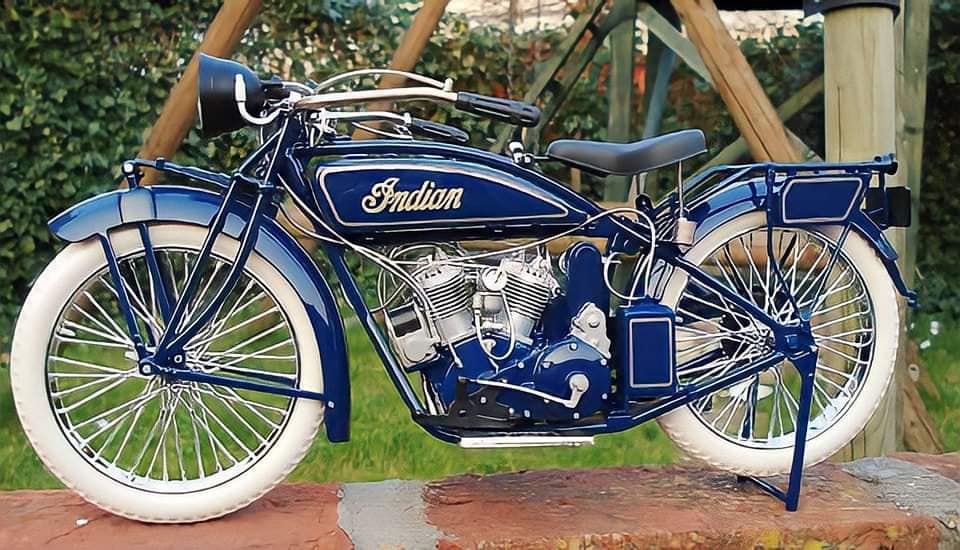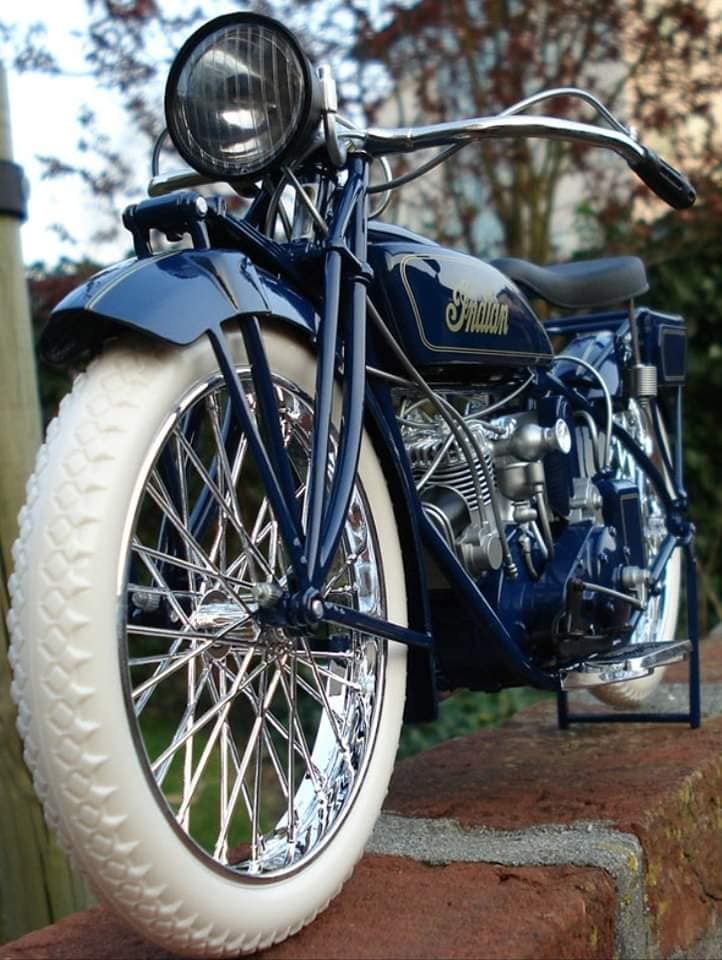The Indian Scout is a motorcycle built by the Indian Motocycle Company from 1920 to 1949. It rivaled the Chief as Indian’s most important model. The 101 Scout, made from 1928 to 1931, has been called the best motorcycle Indian ever made. A second line of Scouts, with heavier frames, was introduced in 1932 alongside the Standard Scout, which replaced the 101 Scout and shared its frame with the Chief and the Four.

The small-displacement Scout and the Sport Scout, introduced in 1934, were continued until the end of civilian production in 1942. Military versions of both models were used by the US and other Allied forces during World War II.

Designed by Charles B. Franklin, the Scout was introduced in October 1919 as a 1920 model. The Scout had a sidevalve V-twin engine with its transmission bolted to the engine casing, allowing a geared primary drive—the only American V-twin to use this maintenance-free system.

The Scout engine initially displaced 606 cc (37 cu in), but the engine size was increased to 745 cc (45 cu in) in 1927 in response to the popularity of the Excelsior Super X. In early 1928, a front brake was added to the Scout.
In mid-1928, the Scout Series 101 replaced the original Scout. Designed by Charles B. Franklin, who had designed the original Scout, the 101 Scout had a new frame with more fork rake, a longer wheelbase, and a lower seat height.

The geometry of the 101 Scout wheelbase, steering head angle, and rear subframe were all adopted from the new Indian 401 model, which was under development at the same time. The standard Scout 101 was available with a 45 cu in (740 cc) engine, but it was also available with a 37 cu in (610 cc) engine from the original Scout, although this was rarely advertised.
The 101 Scout was noted for its handling and was popular with racers, hillclimbers, and trick riders.
The economic hardship of the Great Depression pushed Indian to the brink of bankruptcy, and the company was purchased by the DuPont family. In 1931, it was decided to rationalize production by designing a new frame that, with some detail variations, would be used across their entire, new-for-1932 model range of Scout, Chief and Four.
Thus the 101 Scout was discontinued, as its unique chassis was as expensive to produce as the 74 cu in (1,210 cc) Chief, and therefore had a small profit margin.
The 101 Scout has been called the best motorcycle Indian ever made.
Enthusiasts have differing views on the replacement of the 101 Scout. Fans of Indian’s technical achievements acclaim the 101 Scout as the pinnacle of Indian technology, while fans of classic Indian styling hail its replacement for bringing classic Chief styling to the Scout line. The 101 is still used in wall of death stunt exhibitions.

